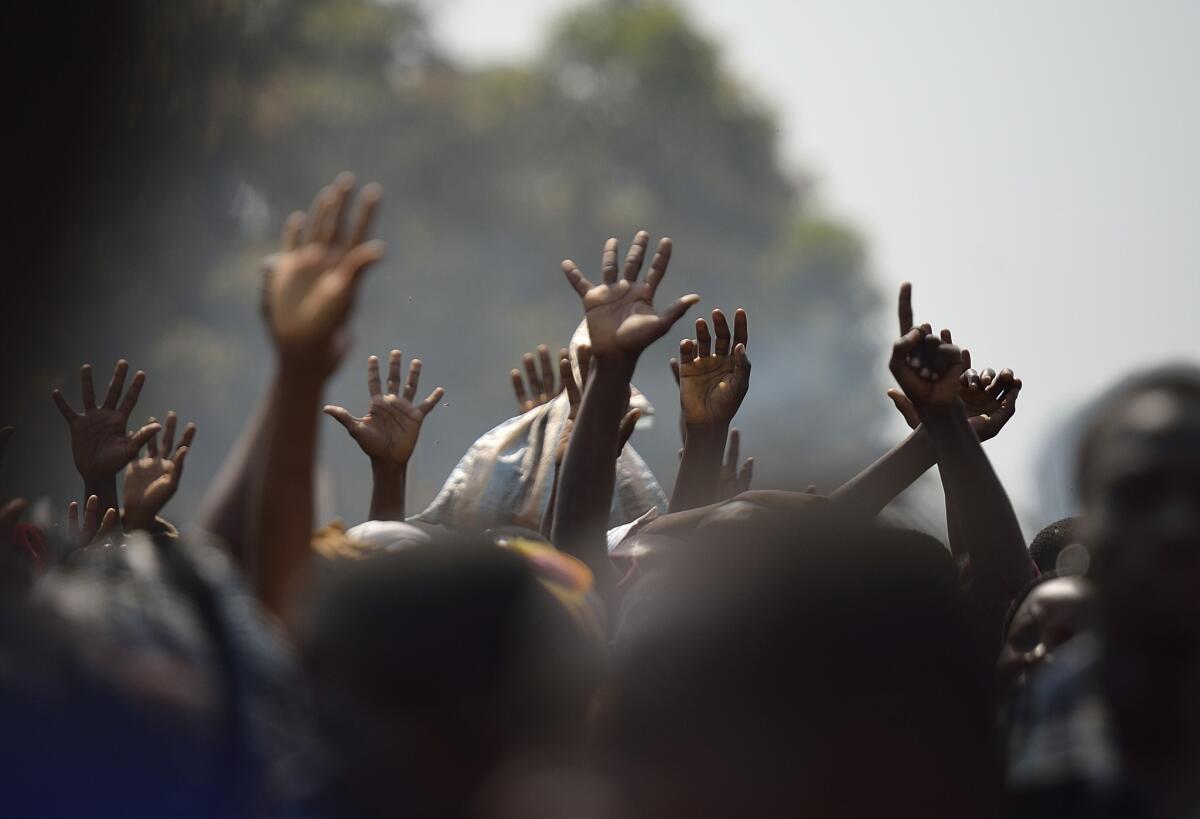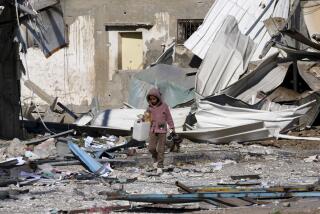Putting your charity dollars where they matter most

- Share via
It seems to happen at a disturbingly frequent rate. A massive typhoon, hurricane, earthquake, tsunami or other horrible catastrophe occurs. The media show heart-wrenching images of disaster beyond anything most people have seen or could even begin to imagine.
People want to help; it is human nature to want to help. And many aid agencies offer just that opportunity as they fundraise for relief efforts. But if we give to them, does it actually make a difference?
This isn’t about deceitful and fraudulent charities. Scams are easy to avoid with a modest amount of due diligence. I’m talking about the legitimate charities trying to do good. Do they actually improve conditions at the disaster sites?
The answer is yes, but disaster relief is notably less effective than many other forms of aid. The issue is described well in a report from the Disease Control Priorities project, which ranks different forms of aid by how effective they are at helping people: “The emotional and sensationalized climate of disaster response has prevented the adoption of a cost-effectiveness approach in decision making. Emergency health interventions like temporary shelters and field hospitals are indisputably more costly and less effective than time-tested health activities.”
The type of “time-tested health activities” the report refers to are those that help the 18,000 children around the world who die every day from preventable causes such as malaria, tuberculosis and unsafe drinking water. This death toll is equivalent to three Typhoon Haiyans every day or a Haitian earthquake every two weeks, though natural disasters get far more media coverage.
But the “every day” deaths are different: We have the knowledge and technology to prevent them. In fact, they were nearly eradicated in the United States before most of us were born. The bottleneck to preventing these deaths is as simple as the funding for things such as mosquito nets, vaccines and clean water.
The Disease Control Priorities report goes on to provide more rationale about its conclusions: “Improvisation and rush inevitably come with a high price. The preferential use of expatriate health professionals; the emergency procurement and airlifting of food, water and supplies that often are available locally or that remain in storage for long periods of time; and the tendency to adopt dramatic measures contribute to making disaster relief one of the least cost-effective health activities.”
How should we think about disaster relief efforts that do help those in need but aren’t “cost effective”? Does cost-effectiveness matter when lives are at stake? One can certainly say that charitable giving to disaster relief efforts should be encouraged because it helps people. This perspective is clearly reasonable if the choice is between giving to disaster relief and not giving to any charity.
But the issue isn’t that simplistic. I have a limited budget for charitable giving. I’m not wealthy enough to fund the needs of victims of disasters as well as traditional health causes. Neither is Bill Gates. Donors face choices about how to allocate their giving. Though it is offensive to many people to pick between those who suffer from one horrible thing and those who suffer from a different horrible thing, the need to prioritize is legitimate.
For charities working in global health and development — like those trying to reduce the 18,000 preventable deaths daily — the lack of money is often the most critical barrier to furthering their missions. In contrast, well-publicized disasters can inspire people to donate billions; the biggest obstacles for charities working in disaster relief are logistical, not financial. Roads and other infrastructure are often destroyed, so charities can’t get supplies to those in need, even with your donations. This is exactly the type of situation that happened after the 2010 earthquake in Haiti, as the rubble hadn’t been cleared even a year later.
What should people do when donating? Look for organizations that are rated highly by charity evaluators that focus on effectiveness, such as GiveWell, Giving What We Can or the Life You Can Save (these are much better than some larger charity rating agencies that only emphasize overhead costs). Alternatively, consider making an unrestricted gift to charities that do both disaster relief and development, such as Oxfam and UNICEF, and let them decide where it is needed most.
This type of approach may not feel as emotionally satisfying because it is less connected to those you see in the media suffering from disasters, but it isn’t callous or oblivious. It requires putting the needs of others ahead of your own emotional fulfillment.
The evidence is clear that there are charitable programs that are more effective than disaster relief, and isn’t helping others the purpose of charitable giving?
Eric Friedman is the author of “Reinventing Philanthropy: A Framework for More Effective Giving.”
More to Read
A cure for the common opinion
Get thought-provoking perspectives with our weekly newsletter.
You may occasionally receive promotional content from the Los Angeles Times.










